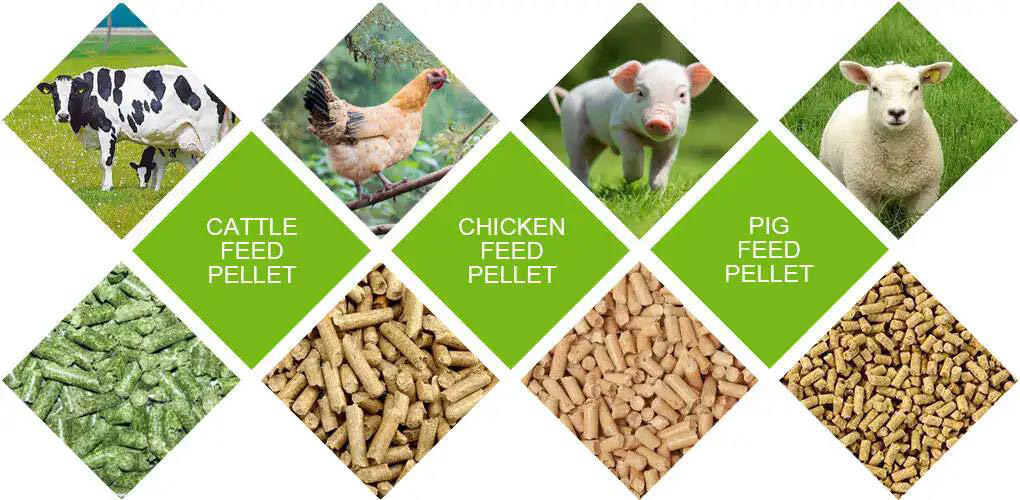horse feed mill
A horse feed mill is an industrial facility specialized in producing feed for horses. Its primary function is to process various raw materials (such as grains, hay meal, soybean meal, etc.) into nutritionally balanced feeds tailored to meet the dietary needs of different types of horses.
horse feed mill Introduction
A horse feed mill is an industrial facility specialized in producing feed for horses. Its primary function is to process various raw materials (such as grains, hay meal, soybean meal, etc.) into nutritionally balanced feeds tailored to meet the dietary needs of different types of horses. These feeds are formulated based on the nutritional requirements of various categories of horses (such as racehorses, working horses, breeding horses, and leisure horses), ensuring they receive optimal nutrition for health and performance.


Main Functions of a Horse Feed Mill
Feed Formulation
Scientifically formulate feed recipes based on the nutritional needs of horses at different ages and stages of life.
Raw Material Procurement
Purchase high-quality raw materials from reliable suppliers, including oats, corn, barley, soybean meal, minerals, and vitamins.
Processing and Production
Utilize grinding, mixing, and pelleting equipment to process raw materials into pellets or powder feed.
Quality Control
Conduct rigorous quality checks during production to ensure feeds meet safety and nutritional standards.
Packaging and Storage
Package finished feeds in various sizes of bags or bulk containers for convenient storage and transportation.


Main Components of a Horse Feed Mill
Raw Material Storage Area
Stores purchased raw materials to maintain freshness and safety before processing.
Grinder
Reduces large raw materials into smaller particles or powder, facilitating mixing and pelleting.
Mixer
Blends different raw materials according to the feed recipe to ensure uniform composition.
Pellet Mill
Processes mixed feed materials under high temperature and pressure into pellets, enhancing palatability and storage stability.
Cooler
Cools newly pelleted feed to prevent clumping and mold formation.
Sieve
Screens out undersized or oversized pellets to ensure consistent quality and particle size.
Packaging Machine
Packs qualified feed pellets into bags for storage and transportation.
Quality Control Laboratory
Conducts nutritional and safety tests on raw materials and finished feeds to maintain high quality.


Key Advantages of a Horse Feed Mill
Balanced Nutrition
Specialized feed formulations provide horses with comprehensive nutrition at different stages of growth, supporting health and performance.
Increased Production Efficiency
Automated and mechanized processes enhance the efficiency and consistency of feed production.
Cost Efficiency
Bulk purchasing and large-scale production reduce costs, improving economic efficiency.
Quality Assurance
Strict quality control processes ensure feed safety and nutritional value, reducing health issues in horses.
Convenience
Standardized packaging and distribution systems simplify access to high-quality feed for horse owners, facilitating feeding management.
Application of horse feed mill
Typically, the production of animal feed processing plant uses raw materials such as corn, soybeans, wheat, and other nutrients as the formula. Our small feed mill plant are specially used to produce feed for poultry, livestock, pigs, horses, cattle, sheep, chickens, ducks, goose and other animals.For different animals, with different growth cycles, (chicks, suckling pigs, calves, etc.), the feed pellet size required is different, but our feed production line only needs to replace ring molds with different apertures or use a pellet crumbler to reach the required size.

Parameter of horse feed mill
| Model | Capacity | Main Motor Power | Feeder Motor Power | Conditioner Power | Dia. of Ring Die | Pellet Size |
| SZLH250 | 1-2T/H | 22KW | 0.75kw | 1.5kw | 250mm | 2-12mm |
| SZLH320 | 3-4T/H | 37KW | 1.5kw | 2.2kw | 320mm | 2-12mm |
| SZLH350 | 5-7T/H | 55KW | 1.5kw | 3kw | 350mm | 2-12mm |
| SZLH420 | 8-12T/H | 110KW | 1.5kw | 7.5kw | 420mm | 2-12mm |
| SZLH508 | 10-18T/H | 160KW | 2.2kw | 11kw | 508mm | 2-12mm |
| SZLH558 | 15-25T/H | 180KW | 2.2kw | 11kw | 558mm | 2-12mm |
| SZLH678 | 20-30T/H | 220KW | 2.2kw | 11kw | 678mm | 2-12mm |
| SZLH768 | 25-42T/H | 280KW | 2.2kw | 11kw | 768mm | 2-12mm |
Tips for Choosing a Horse Feed Mill
Production Capacity
Select a mill with appropriate production scale and equipment configuration to meet specific needs and ensure production efficiency.
Raw Material Quality
Choose suppliers known for providing high-quality raw materials to ensure feed safety and nutritional value.
Equipment Quality
Opt for reliable production equipment to maintain stable and efficient production processes.
Technical Support
Choose a feed mill that offers comprehensive technical support and after-sales service to ensure smooth operations.
Environmental Considerations
Select a feed mill with good environmental facilities and management practices to minimize environmental impact.





